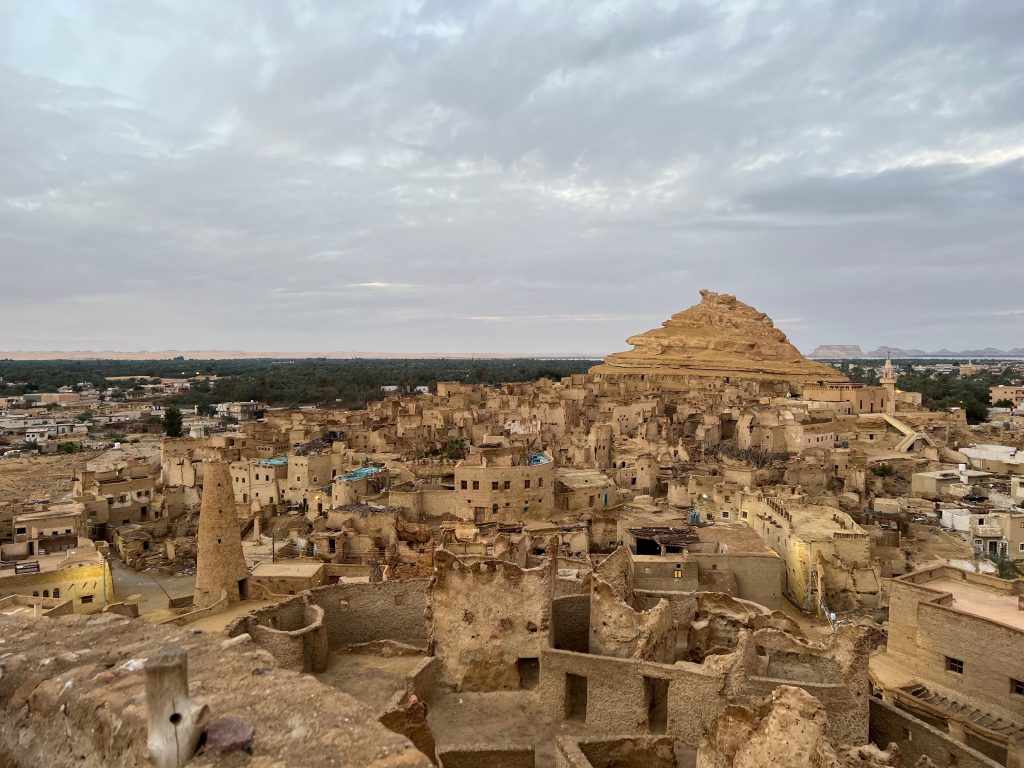The Shali village is a fortified town with three gates located in the oasis of Siwa, near the borders with Libya. This fortified town is located in the center of modern Siwa and is essentially the old town of the oasis. The Village dates back to the year 600H.- 1203 A.D. It is a perfect example of the traditional desert architecture in the Western Desert. The village nowadays shows remains from Kershef buildings.
The Shali village was originally built as a safe place for oasis inhabitants to protect them from foreign attacks, especially from the Bedouin tribes. Most of the buildings were constructed with salt, mud, rock, and plaster. Those materials are not resisting well enough the effects of time, weather, erosion, and human actions, and have been gradually fallings into ruins.
The village combines the remains of houses and shops, six wells, and a sitting room where families gather during funerals and weddings and to resolve their disputes.
Palm trunks were used to fortify the walls of the village buildings, which were surrounded by a defensive wall. Like any other Islamic city, a mosque was established for religious rites.
The architecture of Shali Village is purely environmental architecture that took advantage of the natural materials found in the surrounding environments. Therefore, Karshef, a type of calcified salt found on the edges of lakes, was mixed with silt as a binder and used for construction. The ceilings are installed from palm wood treated in Salt Lake in order to get rid of the sap that attracts biting insects.
The houses built in Karshef have a special value and meaning, as they are not only evidence of the technical capabilities of the ancient people of the oasis, but also of their construction skills. The site encloses the best types of housing possible considering Siwa’s weather conditions. The best part of the Shila village which is its western part is still inhabited.



